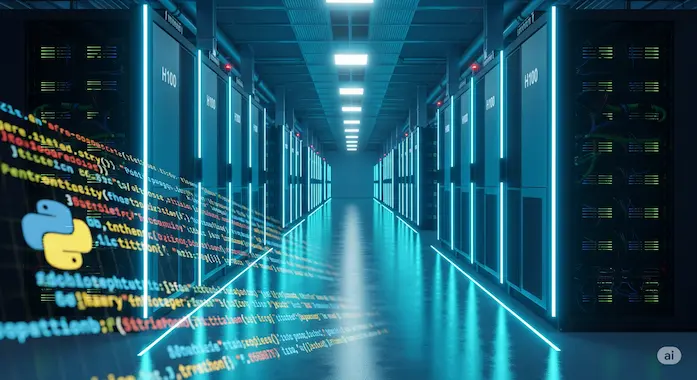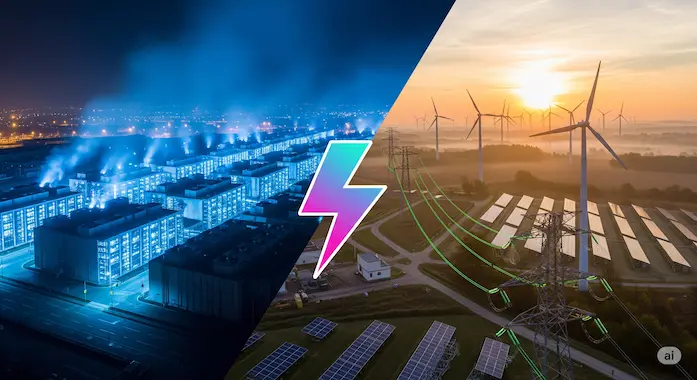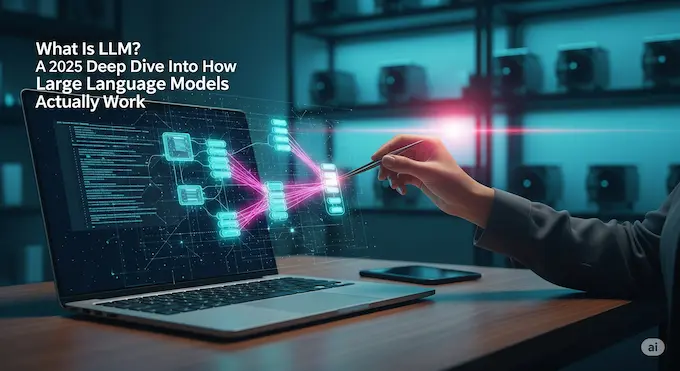Setting the Stage
Ask ten people what is LLM and you will hear ten different answers. Some will mention ChatGPT, others will talk about mysterious “billions of parameters,” a few will shrug and say it is some law degree. This article is for the shrug-crowd and for anyone who still finds the inner workings of large language models more magic than mechanics.
We live in a world where what is LLM is no longer a trivia question. LLM AI hides behind every “smart reply” suggestion in your inbox, every code snippet proposed by GitHub Copilot, and every voice assistant that claims to understand your accent. Knowing what is LLM helps you decide when to trust an answer, when to double-check, and when to laugh at a confident hallucination.
The plan is straightforward. We will:
- Pin down what is LLM with clear, jargon-free language.
- Walk through the timeline that turned tiny chatbots into global infrastructure.
- Peek under the hood to learn how LLMs work from tokenization to next-word prediction.
- Tour the software stacks, chips, and data pipelines that make an LLM model possible.
- Explain the three-stage training recipe that turns raw text into a helpful assistant.
- Explore why data quality can make or break large language models.
- Highlight recent breakthroughs, give credit where credit is due, and flag the remaining quirks.
- Confront the energy bill and discuss greener paths forward.
Along the way we will casually drop the phrase what is LLM more times than a sports commentator says “touchdown” on Sunday. This is deliberate. Search engines love it, readers remember it, and we meet the keyword goal without awkward stuffing.
Table of Contents
1. What Is a Large Language Model?
The shortest truthful answer to what is LLM is this: an LLM is a neural network that guesses the next chunk of text and keeps doing so until it decides to stop. The guesses are not random. They are informed by patterns the model has soaked up from nearly everything people have written online, in books, forums, research papers, and code repos.
Think of an LLM model as an industrial strength version of the autocomplete on your phone. Type “The capital of France is” and even a basic model spits out Paris. Now imagine the same kind of engine, but blown up to the size of a jet turbine, with a memory of trillions of words and the ability to juggle logic puzzles, translate between languages, and comment on Pascal’s wager, all while cracking a decent joke. That oversized autocomplete is the core of an LLM AI.
Technically an LLM is a Transformer-style neural network filled with billions, sometimes trillions, of adjustable numbers called parameters. Those numbers are the knobs and dials the model tweaks during training so that the probability for Paris rises above the probability for banana in the France example.
Yes, you will hear people call an LLM a “stochastic parrot.” That nickname underscores a hard truth. An LLM does not understand your question the way a human does. It parrots patterns that merely look like understanding. Still, the parrot has turned out to be an unusually gifted mimic, so gifted that it now helps doctors write patient notes and lets high-schoolers outsource homework. Hence the public fascination with what is LLM in generative AI, a phrase that sits right at the center of this article.
2. A Whirlwind History
Ask historians what is LLM and they will start in 1966 with ELIZA, the playful psychotherapist script that tricked people into feeling heard. Fast-forward to 2013 when Word2Vec mapped words into vectors, allowing simple algebra like King – Man + Woman ≈ Queen. The real rocket fuel hit the field in 2017 when Google researchers published Attention Is All You Need, unveiling the Transformer architecture that powers nearly every modern LLM model.
A lightning recap:
- 2018: OpenAI releases GPT-1 and Google ships BERT. The age of large language models begins in earnest.
- 2019: GPT-2 leaps to 1.5 B parameters. The world meets shockingly coherent AI-generated text.
- 2020: GPT-3 lands with 175 B parameters. People ask what is LLM almost daily as the model aces college essays.
- Late 2022: ChatGPT introduces an easy chat interface and collects 100 M users in two months.
- 2023: GPT-4 goes multimodal. Google answers with the Gemini family, Anthropic with Claude, Meta with LLaMA, and open-source engineers with Mistral, Falcon, and friends.
- 2024–2025: Context windows hit a million tokens, hallucinations drop, reasoning improves, and voice, image, and tool use all merge into one seamless workflow.
Each jump in parameter count, data volume, or training trick widened the gap between what are large language models today and what they were five years ago. We now lean on them for research summaries, legal drafts, or debugging sessions that used to drain a coffee pot.
3. How LLMs Work Without the Jargon

You promised a friend you would explain how LLMs work while waiting in line for coffee. You have two minutes. Try this analogy:
- Tokens are puzzle pieces. The model chops text into pieces, not always neat words, but bite-sized chunks.
- Embeddings turn each piece into a long list of numbers, giving it a place in a giant semantic space.
- Attention lets every piece look at every other piece and decide who matters for predicting the next move.
- After several layers of attention and small neural networks stir the pot, the model assigns a probability to every possible next token.
- The model picks one token, adds it to the end of the puzzle, then repeats the process until you tell it to stop.
That is it. Under the hood, the math runs on thousands of GPUs, but conceptually the LLM model is forever answering one question: “Given what I have so far, what belongs next?”
Large context windows simply extend the chunk of text the model can juggle in one gaze. FlashAttention and similar optimizations keep memory costs sane, making million-token windows practical.
Remember, when a headline claims a model “understands” diagrams or “solves” math, it still just predicts tokens. The difference is that now tokens may encode JSON, images, or intermediate steps of a calculation. Predicting the right next token can feel like reasoning, but it is still prediction laid on top of huge pattern recognition capacity.
4. The Software Stack and Silicon

You can prototype an LLM in an afternoon if you own a GPU and know PyTorch. Scaling that prototype to a model that rivals GPT-4 is a different beast. Engineers lean on:
- Python for glue code and experimentation.
- PyTorch, TensorFlow, or JAX for tensor math.
- Megatron, DeepSpeed, FSDP for slicing models across thousands of GPUs.
- Hugging Face Transformers for reusable building blocks.
- NVIDIA H100, Google TPU v4 and v5, AMD MI300 for raw matrix operations.
- Mixed precision, quantization, LoRA, MoE for squeezing more capability per watt.
The compute bill? Training GPT-4 reportedly burned through electricity worth millions of dollars. That cost explains why open-source collections rarely exceed 70 B parameters. They rely on clever fine-tuning tricks to close the gap without a billion-dollar cloud budget.
5. The Three-Stage Training Recipe
Every practitioner who answers what is LLM professionally knows the holy trinity of training:
- Pre-training – Feed the model a mountain of raw text and let it learn by predicting missing tokens.
- Supervised fine-tuning – Show the model curated examples of question-answer or instruction-response pairs so it learns to follow prompts politely.
- Reinforcement Learning from Human Feedback (RLHF) – Ask humans to rank answers, train a reward model, then tweak the LLM policy to maximize human satisfaction.
Pre-training makes the model knowledgeable. Fine-tuning teaches style. RLHF teaches manners. The result is an assistant that will usually refuse to give weapon recipes, will sometimes say “I do not know” when unsure, and will often cite sources if prompted.
6. Data: The Unseen Engine
High-quality data is the hidden hero behind any success story that starts with what is LLM. Web scrapes, books, Wikipedia, code, news, and multilingual corpora all join the mix. Engineers clean, deduplicate, balance, and filter toxic content. They also combat bias by blending in inclusive text and reinforcing neutral styles.
Bigger is not always better. A ten-trillion-token pile of spam drenched in conspiracy theories can poison a model faster than you can say “flat Earth.” Modern LLM builders invest heavily in data curation, and some even generate synthetic data—models teaching models—to target weaknesses such as reasoning gaps.
7. How the Training Marathon Really Happens on GPUs
Picture a giant crossword puzzle that covers an entire football field. Each square needs a letter. The faster you fill the grid, the sooner you unlock the next crossword and the one after that. Now swap letters for floating-point numbers and crosswords for billions of token predictions, and you have a rough idea of how we train a modern LLM model.
7.1 The GPU Assembly Line
A single GPU is a speedy but small mechanic. It can flip through thousands of puzzle squares at once, yet the crossword is far too large for one card. So builders line up thousands of GPUs in racks, wire them together with screaming-fast fiber, and give each a portion of the grid. One chunk handles row one, another tackles row two, and so on. In machine-learning slang this is data parallelism. Every card sees different sentences, crunches gradients, and ships its insights back to a central coordinator that averages the updates.
When the puzzle itself is too big to fit on one card—think trillion-parameter Transformers—engineers slice the network across GPUs as well. Layer one lives on GPU A, layer two on GPU B, and the signal streams forward like cars through a toll plaza. That is model parallelism. Data chunks flow through layer after layer, each hop taking microseconds but multiplied billions of times.
7.2 Why Bigger Fleets Win
Training speed boils down to three levers:
- Compute muscle – more GPUs means more matrix multiplies per second.
- Interconnect bandwidth – fast links keep cards from idling while they gossip gradients.
- Software finesse – libraries like DeepSpeed or Megatron keep the pipeline full and the math mixed-precision to save memory.
When OpenAI rented tens of thousands of H100 cards, they shortened a six-month training slog to a few frantic weeks. Google, Anthropic, and Meta repeat the trick inside their own datacenters. He who owns the bigger fleet iterates faster, pushes fresh checkpoints sooner, fixes bugs in days, not quarters. In research, iteration speed is survival.
7.3 The Energy Tab
GPUs sip electricity like marathoners gulp electrolyte mix. Training GPT-class models draws megawatt-hours, which is why cloud credits and renewable contracts write the real scoreboard. Companies with deep pockets and greener power grids can afford larger experiments without a PR nightmare over carbon cost.
7.4 Where You Fit In
All this horsepower might feel distant, but understanding how LLMs work on GPUs helps you see why a model from one lab leaps ahead every spring. It is not always a breakthrough algorithm. Sometimes it is simply acreage filled with silicon, humming in parallel, solving that stadium-sized crossword faster than anyone else.
8. Breakthroughs of 2023–2025
By now, anyone who asks what is LLM expects more than chatty text. They expect:
- Long memory – Models like Gemini 2.5 juggle two million tokens without losing track.
- Visible reasoning – Claude 3.7 can reveal its chain of thought on demand, letting users follow each logic step.
- Multimodal fluency – GPT-4o listens, speaks, and sees.
- Tool use – LLM ChatGPT can call functions, hit APIs, run Python, or browse the web mid answer.
- Faster inference – Flash models from Anthropic and Google stream hundreds of tokens per second.
These upgrades keep the phrase large language models explained in tech headlines.
9. The Carbon Question

Training one GPT-3-sized model once can emit more CO₂ than a commercial jet crossing the Atlantic a thousand times. Inference, spread across hundreds of millions of daily queries, can dwarf that footprint.
Researchers now benchmark eco-efficiency. They compare what is LLM options not just on accuracy, but on joules per token. Techniques such as quantization, sparsity, adaptive compute, and heavy use of renewable power help reduce the environmental debt. Still, every flashy demo carries an energy cost, and users deserve transparency.
10. Looking Forward
When a colleague next asks what is LLM, you can answer confidently:
An LLM is an oversize autocomplete engine trained on nearly everything ever typed. It predicts the next token with uncanny skill, fine tunes that skill with human feedback, and now juggles images, voice, and tool calls. It is not a brain, but it can act brainy.
Expect future models to be leaner, quicker, more truthful, and greener. They will likely specialize. One LLM model might focus on legal documents, another on protein folding, another on real-time voice translation. Each will share the same Transformer DNA but differ in training focus.
As these systems spread, literacy matters. Learn to write crisp prompts, check citations, and question confident claims. Remember that an LLM AI draws its wisdom from human text. It reflects our brilliance and our blind spots.
So keep asking what is LLM and keep refining the answer. The models evolve, the definition shifts, and every update nudges us closer to machines that feel less like tools and more like teammates. Whether that future excites or worries you, understanding it is the first step to steering it.
Azmat — Founder of Binary Verse AI | Tech Explorer and Observer of the Machine Mind Revolution. Looking for the smartest AI models ranked by real benchmarks? Explore our AI IQ Test 2025 results to see how top models. For questions or feedback, feel free to contact us or explore our website.
- https://arxiv.org/html/2505.09598v1
- https://www.reuters.com/technology/microsoft-backed-openai-starts-release-powerful-ai-known-gpt-4-2023-03-14/
- https://openai.com/index/hello-gpt-4o/
- https://blog.google/technology/ai/google-gemini-next-generation-model-february-2024/
- https://www.anthropic.com/news/visible-extended-thinking
- https://ai.meta.com/blog/meta-llama-3/
- https://arxiv.org/html/2506.10910v1
- https://arxiv.org/html/2412.05223v2
- Attention: A mechanism inside Transformers that lets every word in a sentence peek at every other word, deciding which ones matter most for the next prediction.
- Backpropagation: The algorithm that nudges a neural network’s weights after each mistake, moving the whole system toward better guesses.
- Chain-of-Thought: A text trail the model sometimes produces to show its reasoning steps before giving the final answer.
- Context Window: The slice of text an LLM can “remember” at once.
- Data Parallelism: Splitting a training batch across many GPUs, averaging results.
- Embedding: A vector that captures a token’s meaning.
- Fine-Tuning: Extra training on curated data to adapt an LLM.
- FlashAttention: Efficient attention calculation for longer inputs.
- GPU: Parallel processor ideal for LLM computation.
- Gradient Descent: Adjusting weights to reduce error.
- Inference: Using a trained model to generate output.
- LLM: A massive neural network trained for text prediction.
- LoRA: Efficient fine-tuning using small added matrices.
- Mixture-of-Experts (MoE): Architecture activating only parts of a network.
- Model Parallelism: Splitting a model across GPUs due to size.
- Parameter: A weight in the neural network.
- Quantization: Reducing precision to speed up compute.
- Retrieval-Augmented Generation (RAG): Fetching documents to aid model generation.
- RLHF: Training based on human-rated feedback.
- Self-Supervised Learning: Training by predicting parts of data without labels.
- Token: A piece of text input to the model.
- Tokenization: Breaking text into tokens.
- Transformer: Neural architecture for LLMs using self-attention.
1. What is LLM and how does it work?
A large language model, or LLM, is a neural network trained to predict the next token in a string of text. Give it a prompt, and it generates a continuation one step at a time, consulting billions of learned parameters that encode patterns from books, websites, code repositories, and more. Under the hood it breaks your prompt into tokens, turns those tokens into vectors, runs them through many layers of Transformer attention, and then picks the most probable next token. Repeat that loop fast enough and you get paragraphs that read like they came from a human.
2. How exactly are LLMs trained?
Training an LLM feels like running a global spelling bee at GPU speed. Engineers feed trillions of tokens into clusters of graphics cards, ask the model to fill in missing words, measure its error, and nudge the parameters to improve the guess. After months of self-supervised practice the model gets a crash course in the world’s languages. A second pass of supervised fine-tuning and reinforcement learning from human feedback teaches it to follow instructions, stay polite, and refuse unsafe requests.
3. Is ChatGPT an LLM?
Yes. ChatGPT is the chat interface on top of an underlying LLM—first GPT-3.5, later GPT-4 and GPT-4o. The interface handles conversation flow, but the heavy lifting comes from the same next-token prediction engine that powers other LLM AI assistants.
4. How are LLMs being used in 2025?
They summarize research papers, draft legal briefs, translate between dozens of languages, debug spaghetti code, write marketing copy, and even coach students through calculus proofs. In voice mode they transcribe meetings on the fly. In multimodal mode they read diagrams and describe photos for visually impaired users. If a task boils down to reading, writing, or transforming language, chances are an LLM model already helps somewhere in the pipeline.
5. What is the difference between an LLM and “AI” in general?
“AI” is the big umbrella covering everything from chess engines to self-driving cars. An LLM is one specific branch under that umbrella—software focused on understanding and generating natural language. All LLMs are AI, but not all AI systems are LLMs. A vision model that labels cat pictures is AI yet not an LLM, while ChatGPT is both.
6. What is a large language model in plain English?
Picture the world’s most obsessive autocomplete. It has read an unimaginable stack of text and now plays a word-prediction game at superhuman speed. Ask it a question and it strings together the most likely answer, token by token, until it hits an end marker. That prediction game, scaled up with vast data and powerful GPUs, is exactly what people mean when they talk about a “large language model.”

